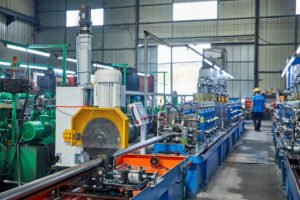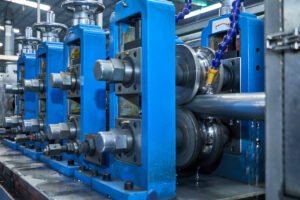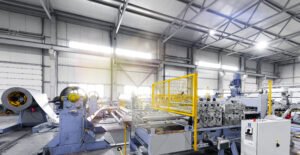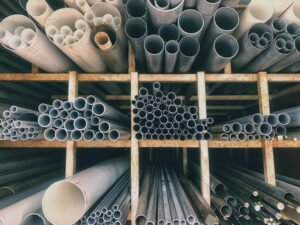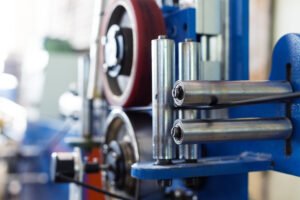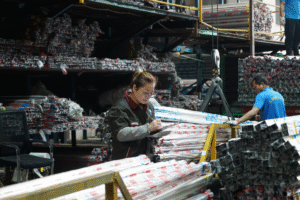District Heating Networks: Benefits of Pre-Insulated Stainless Steel Piping
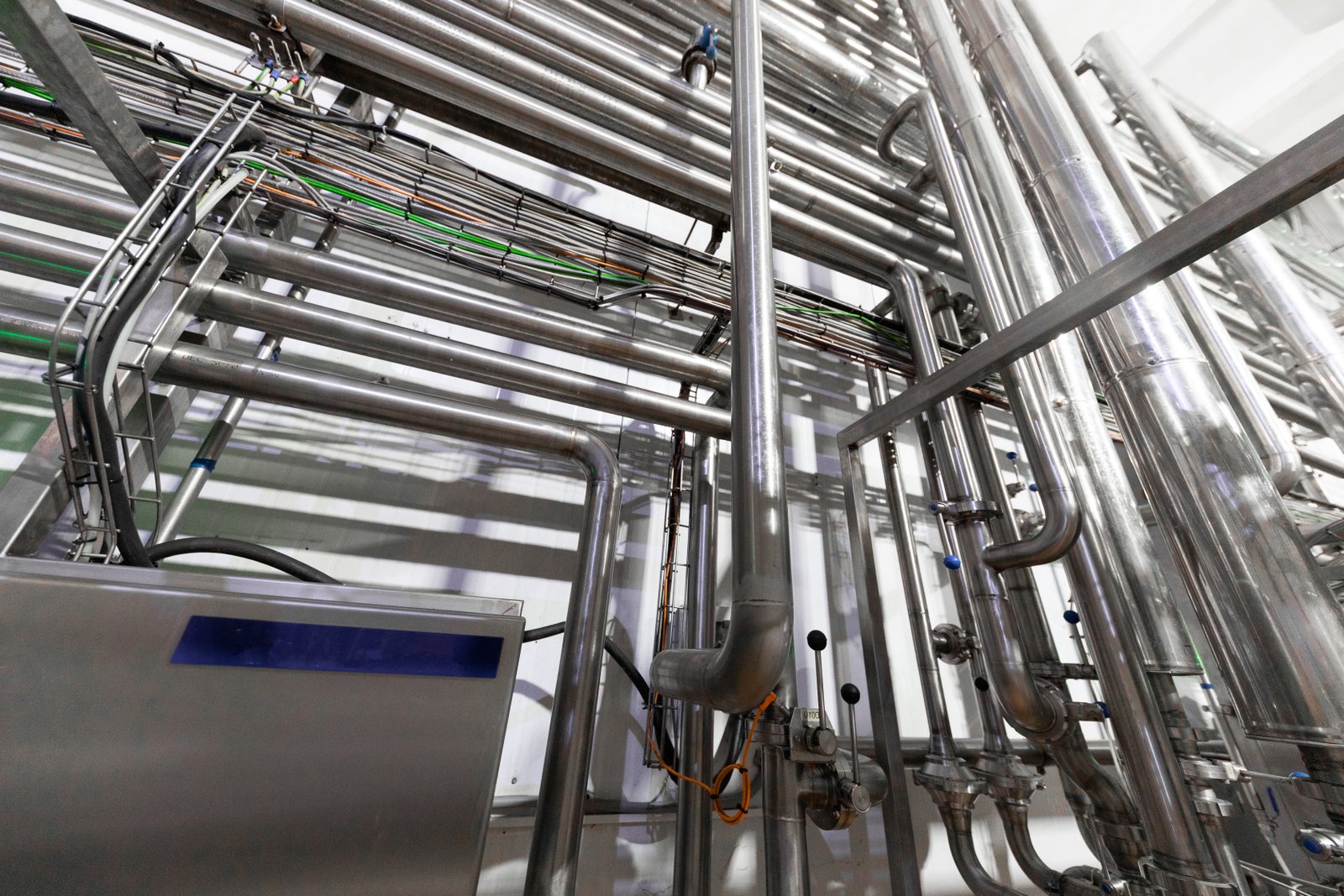
Are your city's energy costs soaring while its carbon reduction goals seem increasingly out of reach? The reliance on outdated, inefficient individual heating systems is a major barrier to progress, locking in high emissions and exposing citizens to volatile energy prices. A shift to centralized district heating networks1 powered by modern materials offers a proven, sustainable path forward for urban development.
District heating networks are crucial for modern cities as they provide a centralized, highly efficient system for distributing heat, often from sustainable sources like waste heat or renewables. The benefits of using pre-insulated stainless steel pipes in these networks include superior thermal efficiency, unmatched corrosion resistance, a 50+ year lifespan, and significantly lower lifecycle costs compared to traditional piping materials.
As the Global Business Director for MFY, I’ve had countless conversations with municipal planners and engineering contractors, from the cold winters of Russia to the rapidly expanding urban centers of India. A common thread emerges: the desire to build infrastructure that is not only efficient today but resilient for generations to come. This is where the crucial decision on piping material is made.
The transition to sustainable urban energy is no longer an abstract concept; it's a pressing reality. District heating is at the forefront of this shift, but a network is only as strong as its weakest link. In this article, we will explore why pre-insulated stainless steel piping has become the gold standard, drawing on technical data and real-world applications to demonstrate how it solves the most critical challenges faced by modern district heating networks.
What are district heating networks, and why are they important for modern cities?
Are you tired of watching individual, inefficient building boilers contribute to urban air pollution and high energy bills? This decentralized approach is a major source of carbon emissions and a financial burden on citizens. District heating offers a smarter, centralized solution to provide clean, affordable heat to entire communities.
District heating networks are centralized energy systems that generate heat at a common plant and distribute it through a network of insulated pipes to residential and commercial buildings. They are critically important for improving energy efficiency, integrating renewable energy sources, and reducing a city’s overall carbon footprint.
The concept of district heating is powerful, but its implementation is a massive undertaking that shapes a city’s energy future for decades. I remember a discussion with a city planning commission in an Eastern European city looking to attract new investment. They knew that offering sustainable, low-cost energy was a competitive advantage. Their primary question wasn't if they should build a district heating network, but how to build it so it would still be a state-of-the-art asset in 50 years. This long-term perspective is precisely why understanding the fundamentals of these systems is so critical for urban leaders today. It forces a conversation that moves beyond initial costs to focus on lifecycle value, resilience, and future-readiness.

The Centralized Energy Model: A Paradigm Shift in Urban Heating
At its core, a district heating (DH) network is a paradigm shift from individual responsibility to collective efficiency. Instead of every building operating its own boiler—often powered by fossil fuels and with varying levels of efficiency—a DH system centralizes heat production in a single, highly efficient plant. This central plant can leverage a diverse range of energy sources that are impractical at the individual building level, including geothermal heat, solar thermal arrays, biomass, waste heat captured from industrial processes or data centers, and large-scale heat pumps. Once produced, the heat, in the form of hot water, is transported through a closed-loop underground network of pre-insulated pipes to every connected building, where it is used for space heating and hot water via a heat exchanger.
The efficiency gains are substantial. While individual gas boilers may operate at 80-90% efficiency in ideal conditions, the overall "grid" efficiency is much lower. In contrast, modern DH systems, especially when they utilize combined heat and power (CHP) plants, can achieve overall energy efficiency levels of 90% or more. A prime example is the city of Copenhagen, which sources a significant portion of its heat from waste-to-energy plants. This integrated system provides clean heat to over 98% of the city, making it a global benchmark in urban decarbonization and a testament to the power of the centralized model.
This model is a core component of what are known as 4th and 5th Generation District Heating systems (4GDH/5GDH). These advanced networks operate at much lower temperatures (typically 50-70°C) compared to older systems (which could exceed 100°C). Lowering the operating temperature dramatically reduces heat loss from the pipes and allows for the efficient integration of low-grade renewable and waste heat sources. This makes the entire system more sustainable and cost-effective, but it also places an even greater emphasis on the quality and performance of the distribution pipe network.
Driving Urban Decarbonization and Sustainability
The single most significant advantage of district heating is its role as a vehicle for decarbonization. Cities account for over 70% of global CO2 emissions, and heating is a major contributor. By centralizing heat production, cities can move away from fossil fuels en masse. A DH network is fuel-agnostic; as new, cleaner energy technologies become available, they can be integrated at the central plant without needing to modify anything in the thousands of connected buildings. This provides a clear, practical roadmap for cities to meet their obligations under international climate agreements and improve local air quality by reducing NOx, SOx, and particulate matter emissions from individual boilers.
The United Nations Environment Programme (UNEP) has identified district heating as a key strategy for cities to achieve a sustainable energy future. Their research shows that transitioning to modern DH networks could cut CO2 emissions from the building sector by up to 50%. I’ve seen this firsthand in discussions with developers in Southeast Asia who are building new "eco-cities." For them, a DH network is not an afterthought; it is a foundational piece of infrastructure, just like roads and water systems, that establishes the development's green credentials from day one. It is a powerful selling point for attracting residents and businesses who prioritize sustainability.
This potential is particularly relevant for many of MFY’s export markets. Cities in Russia could leverage their existing infrastructure by upgrading to more efficient, lower-temperature systems, while rapidly growing urban areas in India could leapfrog older technologies entirely. By adopting district heating, they can build in energy efficiency and environmental performance from the start, avoiding the costly and disruptive retrofits that many Western cities now face. The key is to make the right long-term investment in the underground pipe infrastructure that forms the network's backbone.
Enhancing Energy Security and Economic Resilience
Beyond environmental benefits, district heating significantly enhances a city's energy security and economic resilience. By enabling the use of diverse, locally sourced fuels—including municipal waste and industrial byproducts—DH networks reduce a city's dependence on imported fossil fuels, which are subject to extreme price volatility and geopolitical uncertainty. This diversification creates a more stable and predictable energy pricing environment for residents and businesses, acting as a powerful economic stabilizer. An economy powered by locally sourced energy is inherently more resilient.
Consider the impact of a sharp spike in global natural gas prices. In a city where most buildings are heated by individual gas boilers, residents see an immediate and dramatic increase in their heating bills, creating significant economic hardship. In a neighboring city with a diverse DH network that utilizes waste heat, biomass, and geothermal energy, the price increase passed on to consumers is much smaller and more controlled. The central plant can adjust its fuel mix to favor the most cost-effective sources, shielding the entire community from the worst of the market shock.
This resilience is a key factor for our clients who are contractors on large-scale public infrastructure projects. They understand that when they build a DH network, they are not just laying pipes; they are building a city's capacity to withstand future shocks. The choice of materials for that network is therefore a choice about its long-term reliability and ability to deliver on this promise of security and stability for decades to come.
| Feature | Decentralized Heating (Individual Boilers) | Centralized District Heating |
|---|---|---|
| Energy Efficiency | Low to Moderate (System-wide) | Very High (up to 90%+) |
| Fuel Flexibility | Low (Typically one fuel per building) | High (Diverse, including renewables & waste heat) |
| CO2 Emissions | High | Low to Zero |
| Maintenance | Individual homeowner responsibility | Centralized, professional maintenance |
| Suitability for Urban Density | Moderate | Excellent |
| Lifecycle Cost | High (factoring in replacements and fuel) | Lower (due to efficiency and longevity) |
District heating improves energy efficiencyTrue
Modern district heating systems can achieve over 90% energy efficiency by centralizing heat production and utilizing diverse energy sources.
Individual boilers are more efficientFalse
While individual boilers may claim high efficiency ratings, district heating achieves superior system-wide efficiency through centralized optimization.
How are pre-insulated stainless steel pipes currently being used in district heating networks?
You are tasked with building a district heating network that must last for generations. The sheer scale of the investment is immense, and the thought of using materials that could corrode or leak within decades is a terrifying prospect. This choice could make or break the project's long-term success. Pre-insulated stainless steel pipes are the modern solution, ensuring durability, efficiency, and peace of mind.
In modern district heating networks, pre-insulated stainless steel pipes are the primary component for the underground distribution grid. They transport hot water from the central plant to buildings with minimal heat loss, offering exceptional corrosion resistance and a service life exceeding 50 years, ensuring system integrity.
The theoretical benefits of a material mean little until they are proven in the demanding conditions of a real-world project. I recently worked with an engineering and construction contractor on a landmark project in the Middle East. They were building a DH network for a new, high-end commercial district. Given the region's aggressive soil conditions and high water salinity, traditional carbon steel was not a viable option. They chose MFY's pre-insulated stainless steel piping not just for its technical superiority but as a strategic decision to guarantee the network's longevity and protect their client's massive investment. This project perfectly illustrates how these advanced pipes are deployed in the field and why they have become the preferred choice for forward-thinking developers who cannot afford to compromise on quality.
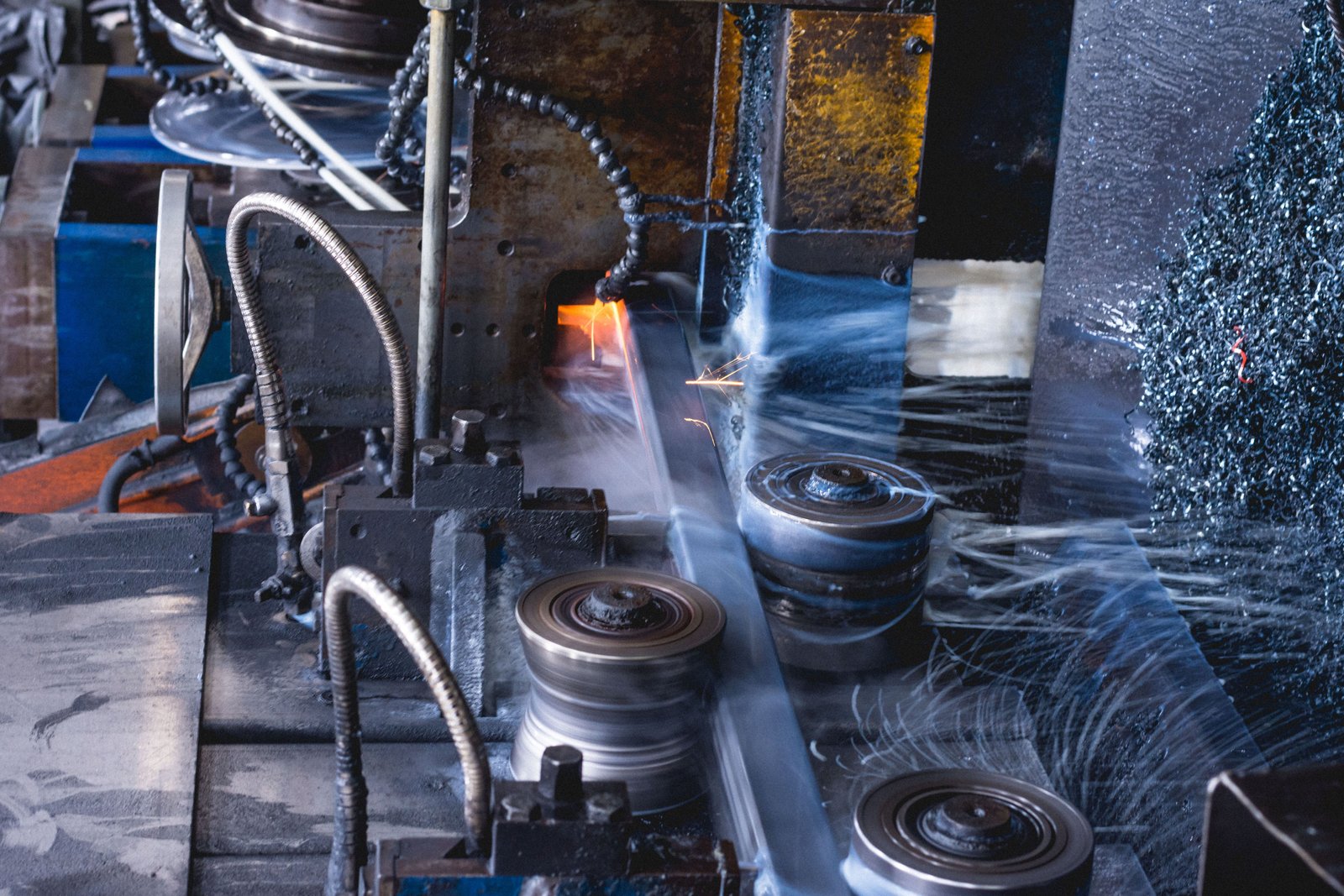
The Anatomy of a High-Performance Pre-Insulated Pipe
A modern pre-insulated pipe is a composite system, a highly engineered product where each component plays a critical role in delivering long-term performance. It consists of three distinct layers bonded together in a factory-controlled process to create a monolithic structure. The first and most important component is the carrier pipe, which is the channel that transports the hot water. In high-quality systems, this is made from stainless steel, typically in corrosion-resistant grades like 304L or 316L stainless steel2. The "L" signifies low carbon content, which is crucial for maintaining corrosion resistance after welding the pipe joints. Stainless steel is chosen for its inherent strength and, most importantly, its passive corrosion resistance, which eliminates the need for the costly and fallible protection systems required by carbon steel.
The second layer is the thermal insulation, which is made from rigid, closed-cell polyurethane foam (PUR). This foam is injected into the space between the carrier pipe and the outer casing, where it expands to fill every void, creating a seamless, airtight insulation layer. This process ensures a strong bond between all three layers, which is critical for the pipe's structural integrity and long-term thermal performance. PUR foam has exceptionally low thermal conductivity, typically in the range of 0.022 to 0.027 W/(m·K), which allows it to minimize heat loss as the water travels through the network.
The final, outer layer is the protective casing, almost always made from high-density polyethylene (HDPE). This rugged plastic jacket serves as the pipe's primary defense against the external environment. It is waterproof, impact-resistant, and tough enough to withstand the stresses of transportation, installation, and the subterranean environment for its entire service life. The HDPE casing prevents moisture from reaching the PUR insulation, which is essential because waterlogged insulation loses its thermal properties and can lead to external corrosion of the carrier pipe. This three-in-one, factory-made system is a world away from older methods where pipes were laid first and insulated on-site, a process fraught with inconsistencies and quality control issues.
Application Across the Network: From Transmission to Distribution
District heating networks are structured much like a road system, with large arterial transmission lines branching out into smaller local distribution lines. Pre-insulated stainless steel pipes are used across this entire hierarchy. The primary loop consists of large-diameter pipes that transport a massive volume of hot water from the central heating plant to the main substations located in different city zones. These lines operate under the highest temperatures and pressures and are the absolute backbone of the system. Using stainless steel here guarantees the highest level of reliability for these critical assets.
From the substations, the secondary loop begins. This consists of smaller-diameter pipes that branch out to supply individual streets and buildings. Here, the flexibility and corrosion resistance of stainless steel become even more advantageous. For these smaller pipes, MFY can supply long, continuous coils of pre-insulated stainless steel tubing. Using coiled pipe dramatically reduces the number of underground joints required. Since joints are the most labor-intensive part of an installation and a potential weak point for leaks, minimizing them is a huge benefit. This speeds up installation, reduces costs, and significantly improves the overall integrity of the network, which was a key factor for the contractor on the Middle East project.
A case in point is a new university campus built in Southeast Asia, conceived as a model for sustainable development. The project's charter mandated a minimum 50-year design life for all underground infrastructure. The engineering firm specified pre-insulated stainless steel pipes from MFY for the campus-wide DH network. They used large-diameter straight lengths for the primary loop connecting the central energy facility to each faculty building and flexible coiled pipes for the secondary distribution lines within each building complex. This hybrid approach optimized both performance and installation efficiency, helping them meet their ambitious sustainability and longevity targets.
The Critical Importance of Advanced Jointing Technology
A pipeline is only as strong as its joints. In a pre-insulated pipe network, the jointing process is a highly technical task that involves reconnecting all three layers of the pipe: the carrier pipe, the insulation, and the outer casing. After the stainless steel carrier pipes are welded together using high-purity TIG (Tungsten Inert Gas) welding, the joint must be insulated and sealed to the same standard as the factory-made pipe. This is accomplished using specialized jointing kits.
The process involves fitting a casing sleeve over the exposed joint area. The space is then filled with the same PUR foam chemical mixture used in the factory, ensuring the thermal insulation is continuous across the joint. ly, the outer casing is sealed, often through heat-shrinking or electrofusion welding, to create a completely watertight and durable connection. This meticulous process ensures that the joint will not become a point of heat loss or water ingress for the life of the system.
The reliability of these modern jointing systems is far superior to older methods. It eliminates the guesswork and variability of on-site manual insulation. For a network that can have thousands of such joints buried under city streets, this level of quality control is not a luxury; it is an absolute necessity. It ensures that the high performance engineered into the pipe is maintained throughout the entire network, guaranteeing its efficiency and durability for decades to come.
| Pipe Component | Material | Primary Function | Key Advantage of MFY's System |
|---|---|---|---|
| Carrier Pipe | Stainless Steel (304L/316L) | Transports hot water | Inherent corrosion resistance, 50+ year life |
| Insulation Layer | Polyurethane (PUR) Foam | Minimizes heat loss | Low thermal conductivity, factory-bonded void-free |
| Outer Casing | High-Density Polyethylene (HDPE) | Protects from moisture & damage | High durability, watertight seal |
| Joints | Specialized Kits | Reconnects all three layers | Ensures continuous, reliable performance |
Stainless steel resists corrosionTrue
Stainless steel's passive corrosion resistance eliminates the need for additional protection systems.
PUR foam conducts heat wellFalse
Polyurethane foam has exceptionally low thermal conductivity (0.022-0.027 W/(m·K)), making it an excellent insulator.
What challenges do district heating networks face without using pre-insulated stainless steel pipes?
Imagine investing hundreds of millions into a new heating network, only to see it plagued by leaks and failures within 20 years. This isn't a hypothetical; it's the costly reality for systems built with traditional carbon steel pipes, which suffer from inevitable corrosion and high maintenance demands. The financial and reputational damage can be immense, undermining the entire purpose of the project.
District heating networks built with traditional materials like carbon steel face immense challenges, including severe internal and external corrosion leading to leaks, significant heat loss from degraded insulation, a short operational lifespan of 20-30 years, and cripplingly high maintenance and repair costs.
The consequences of choosing the wrong material are not abstract; they are measured in emergency repair crews, disrupted service to residents, and budget overruns that can cripple a municipality. I'll never forget a conversation with a senior engineer from a city in the CIS region. He described his team's work as a "never-ending battle" against corrosion in their 30-year-old carbon steel DH network. He lamented that they spent more time and money patching leaks and digging up streets than they did on proactive improvements. His story is a powerful cautionary tale. The initial savings from choosing cheaper materials had been erased many times over by decades of relentless maintenance. This real-world struggle highlights the critical challenges that pre-insulated stainless steel pipes were specifically engineered to solve.

The Inevitable and Costly Problem of Corrosion
The number one enemy of any buried steel pipeline is corrosion. For traditional district heating networks built with carbon steel, it is an unavoidable and relentless threat that attacks from both the outside and the inside. External corrosion is caused by moisture and dissolved salts present in the surrounding soil. Even with protective coatings, a single scratch or imperfection during installation can become an initiation point for corrosion that can eventually lead to a leak. Furthermore, if the outer casing of the pre-insulation system is breached, moisture will saturate the insulation and hold it directly against the carbon steel pipe, creating a perfect environment for rapid, aggressive corrosion.
Internal corrosion3 is just as damaging. The hot water flowing through the pipes, unless perfectly deoxygenated and treated, is inherently corrosive to carbon steel. Over time, this leads to wall thinning and the formation of pits, which eventually grow into through-wall leaks. The scale (rust) that forms on the inside of the pipes also reduces flow efficiency and can flake off, clogging control valves and heat exchangers downstream. According to NACE International (now AMPP), corrosion costs the global economy trillions of dollars annually, with pipeline failures being a major contributor. For a DH network, a single leak is not just a loss of water; it's a loss of expensive, treated, and heated water, representing a significant financial drain.
This constant threat of corrosion effectively puts a ticking clock on any DH network built with carbon steel. The generally accepted design life for these systems is typically only 20 to 30 years. After this point, the frequency of leaks and failures begins to increase exponentially, making the system unreliable and prohibitively expensive to maintain. This forces municipalities into a costly cycle of replacement long before they have fully realized the return on their initial investment.
The Compounding Effect of Energy Inefficiency
The second major challenge is the progressive loss of thermal efficiency. The entire business case for district heating rests on its ability to transport heat over long distances with minimal loss. However, systems using traditional materials are highly vulnerable to efficiency degradation over time. The primary cause is moisture ingress into the insulation. As mentioned, a breach in the outer casing allows groundwater to seep into the insulation material. Once wet, the insulation's thermal conductivity skyrockets, and its ability to prevent heat loss is virtually eliminated. The pipe might as well not be insulated at all in that section.
This problem is particularly acute in older systems or those with lower-quality, on-site applied insulation. The result is that the central plant has to burn more fuel and pump more water to deliver the required amount of heat to the end-users, directly increasing operational costs and carbon emissions. A study by Euroheat & Power highlighted that in some older, poorly maintained networks, heat losses could account for as much as 25-30% of the total heat produced, whereas modern networks aim for losses below 10%. This is a massive waste of energy and money that directly contradicts the core purpose of the DH network.
Furthermore, the internal scaling caused by corrosion also degrades thermal performance. The layer of rust on the inside of the pipe acts as an insulating barrier, impeding the efficient transfer of heat at the end-user's heat exchanger. This means that even if the hot water arrives, it cannot be used effectively, leading to customer complaints about insufficient heating and forcing the network operator to increase system temperatures, which in turn increases heat losses from the pipes in a vicious cycle.
The High Price of a Short Lifespan: Total Cost of Ownership
When municipalities only consider the initial purchase price of pipes, they often make a financially disastrous decision. While carbon steel pipes may appear cheaper upfront, their Total Cost of Ownership (TCO) is vastly higher than stainless steel when factored over the system's intended lifecycle. The TCO includes not just the initial capital expenditure but all operational and maintenance costs over several decades. For carbon steel systems, these costs are substantial. They include the cost of ongoing water treatment, the cost of energy lost due to inefficiency, the direct cost of labor and materials for frequent leak repairs, and the indirect social costs of service interruptions and road closures for maintenance.
Let's consider a simplified TCO comparison for a hypothetical 1-kilometer section of a DH network over a 50-year period. A carbon steel system might need a complete replacement after 25 years, meaning the capital cost is incurred twice. A stainless steel system, with a 50+ year lifespan, is a single investment. When you add in the annual costs of higher energy loss and frequent repairs for the carbon steel option, the financial picture becomes crystal clear.
| Cost Component (50-Year Projection) | Carbon Steel System | Pre-Insulated Stainless Steel System |
|---|---|---|
| Initial Capital Cost (Year 1) | € 500,000 | € 750,000 |
| Replacement Cost (Year 26) | € 1,500,000 (inflation-adjusted) | € 0 |
| Cumulative Energy Loss Cost | € 750,000 (avg. €15k/year) | € 250,000 (avg. €5k/year) |
| Cumulative Maintenance & Repair Cost | € 1,000,000 (avg. €20k/year) | € 50,000 (minimal repairs) |
| Total 50-Year Cost of Ownership | € 3,750,000 | € 1,050,000 |
Note: Figures are illustrative to demonstrate the principle.
This analysis shows that the initial 50% premium for stainless steel results in a TCO that is less than one-third of the carbon steel alternative. This is the financial argument that I present to clients. Investing in pre-insulated stainless steel is not an expense; it is a powerful strategy to eliminate future liabilities and secure a city's energy infrastructure for the long term.
Carbon steel pipes corrode internally and externallyTrue
Carbon steel pipes face corrosion from both soil moisture (external) and hot water flow (internal), leading to leaks and reduced efficiency.
Carbon steel pipes last 50+ yearsFalse
Carbon steel DH systems typically require replacement after 20-30 years due to corrosion damage, unlike stainless steel which lasts 50+ years.
How do pre-insulated stainless steel pipes address these challenges effectively?
Imagine a "fit and forget" infrastructure solution that operates for over 50 years with minimal maintenance. This is the peace of mind that municipalities and developers crave. The constant cycle of repairs and the worry about corrosion and inefficiency can be eliminated. Pre-insulated stainless steel pipes are specifically designed to deliver this level of long-term, hassle-free reliability.
Pre-insulated stainless steel pipes effectively solve the challenges of traditional systems by providing total immunity to corrosion, which guarantees a 50+ year lifespan. Their factory-bonded, high-performance insulation ensures minimal, stable heat loss, maximizing energy efficiency and drastically reducing operational and maintenance costs over the system's life.
The decision to adopt a superior technology often stems from a direct and painful experience with the old one. After seeing the compelling lifecycle cost data, the contractor for the Indian smart city project4 I worked with became a true advocate for pre-insulated stainless steel. They had previously been involved in a project using carbon steel and had faced significant delays and cost overruns due to weld failures and damage to coatings during installation. For their new flagship project, they wanted to build their reputation on quality and innovation. They chose MFY's stainless steel solution not just as a component, but as a core feature of their high-quality construction promise. Their successful implementation became a case study, demonstrating to other developers in the region how investing in the right material from the start pays massive dividends in efficiency, reliability, and brand image.
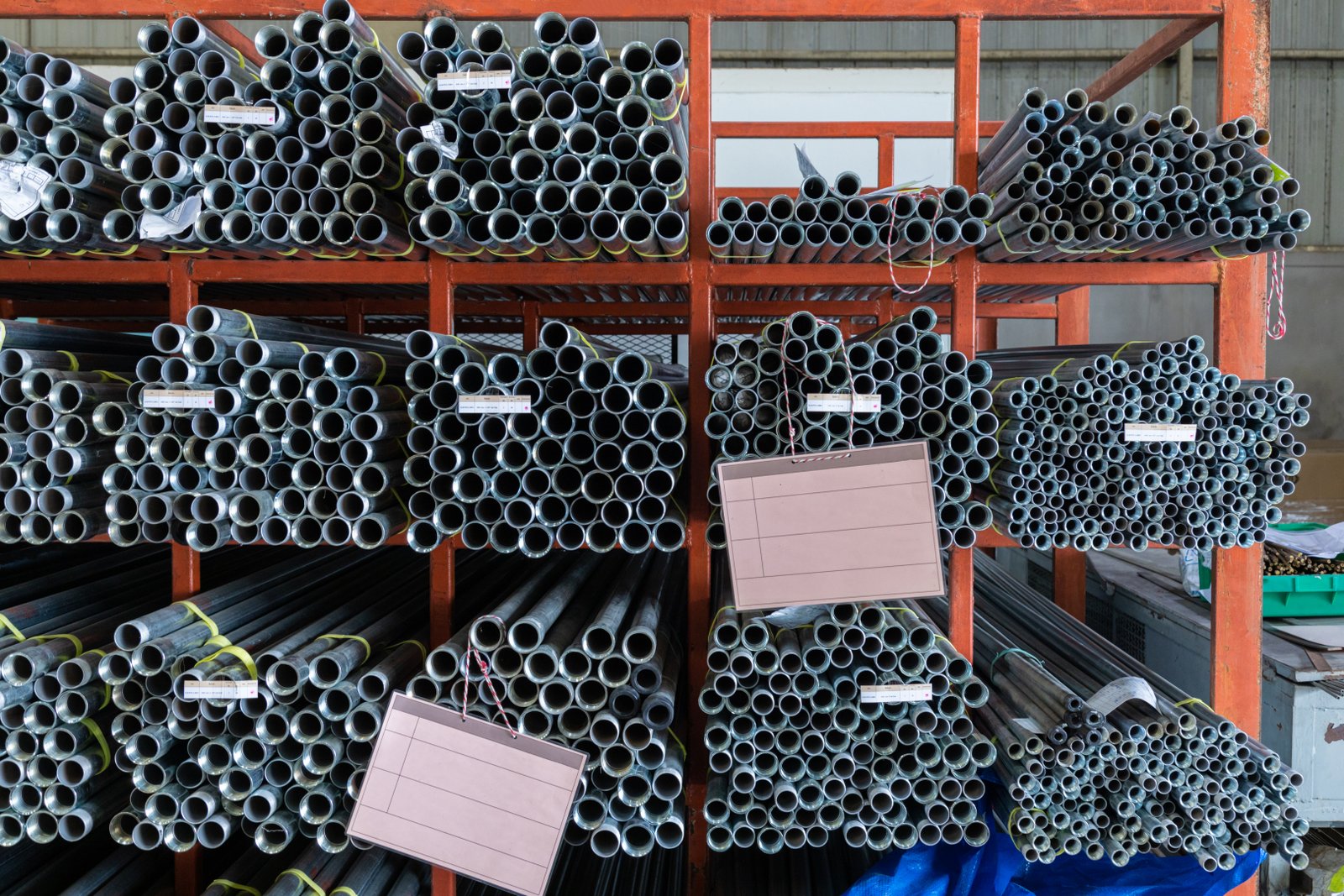
The Power of Passive Corrosion Resistance
The single greatest advantage of stainless steel is its inherent ability to resist corrosion. This property isn't a coating or a temporary treatment; it's built into the very chemistry of the alloy. Stainless steel contains a minimum of 10.5% chromium. When exposed to oxygen (from air or water), this chromium instantly forms a thin, transparent, and incredibly tenacious layer of chromium oxide on the surface of the steel. This "passive layer" is the key to its immortality. It acts as an inert barrier, hermetically sealing the iron in the alloy from the surrounding environment and preventing rust from ever forming.
What makes this passive layer truly remarkable is that it is self-healing. If the pipe surface is scratched or damaged during installation, the exposed chromium immediately reacts with oxygen again to instantly reform the protective layer. This is a fundamental difference from carbon steel, which relies entirely on artificial barriers like coatings or cathodic protection. These external systems are fragile; once breached, the corrosion begins and will not stop. Stainless steel, on the other hand, takes care of itself. For buried infrastructure that is difficult and expensive to access, this "built-in" protection is a game-changer.
At MFY, we typically recommend Grade 316L stainless steel5 for the most demanding district heating applications. In addition to chromium and nickel, 316L contains molybdenum, which significantly enhances its resistance to pitting and crevice corrosion, especially in environments containing chlorides (e.g., from road salts or coastal soil). This ensures that the pipe remains immune to both internal corrosion from the water and external corrosion from the soil for its entire 50+ year service life, effectively eliminating the primary failure mode of older networks.
Locking in Thermal Efficiency for Half a Century
Solving the corrosion problem is the first step to ensuring long-term efficiency. Because the stainless steel carrier pipe does not corrode, it will never develop an internal layer of rust scale. This ensures that its flow characteristics remain unchanged and that heat transfer at the end-user heat exchanger remains as efficient in year 50 as it was in year 1. More importantly, the stability of the stainless steel pipe ensures the integrity of the three-layer composite system. There is no risk of the pipe degrading underneath the insulation.
The true key to long-term efficiency is the factory-controlled manufacturing process of the pre-insulated pipe system. The PUR foam is injected under precise conditions, guaranteeing a uniform density and a perfect bond to both the stainless steel carrier pipe and the HDPE casing. This monolithic structure ensures that the system's exceptional thermal performance—with heat losses as low as 1-2°C per kilometer in modern systems—does not degrade over time. The rugged HDPE casing and the watertight jointing technology prevent moisture ingress, the main enemy of thermal efficiency.
This sustained performance has a massive impact on operating costs. A network that maintains its low heat loss saves enormous amounts of energy and money over its lifespan. For the Indian smart city developer, this was a critical selling point. They could offer residents and businesses lower, more stable heating costs and could accurately forecast their own operational expenses for decades, providing a level of financial certainty that is impossible with less reliable infrastructure. This predictable, long-term efficiency is a cornerstone of a sustainable and economically sound energy system.
Superior Lifecycle Economics and Installation Benefits
While the initial material cost of stainless steel is higher than carbon steel, it provides significant savings in other areas that dramatically reduce the total installed cost and overall lifecycle cost. Stainless steel has a higher strength-to-weight ratio, meaning a pipe with the same pressure rating can be made with a thinner wall. This makes the pipes lighter, reducing transportation costs and making them easier to handle on site. The inherent flexibility of stainless steel further simplifies installation, as it can better accommodate slight curves and obstacles in the trench, reducing the need for extra fittings.
As mentioned earlier, the ability to supply smaller diameter pipes in long coils is a major advantage. For the distribution network branching into residential streets, this can eliminate hundreds or even thousands of welds. This not only speeds up the project timeline dramatically but also removes potential points of failure, increasing the network's overall integrity and reducing the need for skilled welders on site. These installation efficiencies help to offset the higher material price, making the initial cost premium much smaller than it appears at first glance.
When you combine the installation savings with the complete elimination of future replacement costs and the drastic reduction in maintenance and energy loss, the economic case for pre-insulated stainless steel becomes undeniable. It represents a shift from a short-term, cost-focused mindset to a long-term, value-based investment strategy. This is the conversation we at MFY have with our clients. We help them see that by choosing a superior material, they are not just buying pipe; they are buying certainty, reliability, and the lowest possible cost of ownership for the next 50 years.
Stainless steel resists corrosionTrue
Stainless steel contains chromium which forms a self-healing oxide layer that prevents rust.
Carbon steel is more durableFalse
Carbon steel requires coatings for corrosion protection and has a shorter lifespan than stainless steel.
What technology advancements in pre-insulated pipes should be considered for future improvements in district heating?
Just as today's district heating is far superior to yesterday's, the technology of tomorrow promises even greater gains. The demands for ultra-high efficiency and smart, responsive grids are growing. Relying solely on current technology may not be enough to build the truly intelligent and sustainable energy systems of the future. Continuous innovation in piping is essential to meet this challenge.
Key future advancements for pre-insulated pipes include the use of next-generation materials like vacuum insulation panels (VIPs) for near-zero heat loss, the integration of fiber optic or sensor wires for real-time leak detection and condition monitoring, and a greater focus on circular economy principles using recycled steel and bio-based plastics.
At MFY, our vision is to be a leader in the global expansion of China's stainless steel industry, and that requires us to be at the forefront of innovation. We are constantly engaged with research institutions and technology partners to understand and help shape the future of infrastructure materials. The global push towards 4th and 5th Generation District Heating, which operates at very low temperatures, makes thermal efficiency more critical than ever. In these systems, even a small amount of heat loss can compromise performance. This challenge is driving a new wave of innovation aimed at creating "smarter," more efficient, and more sustainable piping systems, transforming them from simple conduits into intelligent assets within a modern smart city grid.

The "Smart Pipe": Integrated Sensing and Real-Time Monitoring
The most significant near-term advancement is the transformation of the pre-insulated pipe into a "smart pipe." This involves embedding sensor and communication systems directly into the pipe's insulation layer during the manufacturing process. The most common system, which is already available, is the integration of two copper surveillance wires. These wires run the entire length of the pipeline. In normal operation, the PUR insulation keeps them electrically isolated. However, if a leak occurs in the carrier pipe or a breach in the outer casing allows moisture to penetrate the insulation, the water will create a short circuit between the wires or between one wire and the carrier pipe. Monitoring equipment detects this change in electrical resistance, triggering an alarm and allowing operators to pinpoint the location of the breach with remarkable accuracy, often to within a meter.
This technology shifts network maintenance from a reactive to a proactive model. Instead of waiting for a visible surface leak to appear—at which point significant damage may have already occurred—operators can detect a problem the moment it begins. This allows for planned, targeted repairs that are far less costly and disruptive than emergency interventions. It prevents large-scale water loss, protects the insulation from becoming saturated, and ensures the long-term integrity of the network.
Future iterations of the smart pipe concept involve embedding fiber optic cables. These can be used for Distributed Temperature Sensing (DTS) and Distributed Acoustic Sensing (DAS). DTS can provide a continuous temperature profile along the entire pipeline, allowing operators to identify not just leaks but also areas of suboptimal thermal performance. DAS can detect the acoustic signature of a pinhole leak or even third-party intrusion (e.g., unauthorized digging near the pipeline), providing an unprecedented level of real-time monitoring and security for these critical urban assets.
The Next Frontier in Insulation: Pushing the Boundaries of Thermal Performance
While PUR foam is an excellent insulator, the drive for even greater efficiency, especially in low-temperature networks, is pushing research into next-generation materials. The most promising of these are Vacuum Insulation Panels (VIPs). A VIP consists of a porous, fumed silica core that is evacuated of air and sealed in a multi-layered, gas-impermeable envelope. Because there is virtually no air to conduct heat, VIPs can achieve a thermal conductivity that is five to ten times lower than that of PUR foam. Integrating VIPs into the pre-insulated pipe design could create a system with near-zero heat loss.
The current challenges for VIPs are their high cost and relative fragility; the vacuum is lost if the outer envelope is punctured. However, researchers are developing hybrid systems where VIPs are used in combination with PUR foam. The foam provides structural support and protects the panels, while the VIPs provide the bulk of the thermal resistance. As manufacturing techniques improve and costs come down, VIP-enhanced pipes could become the new standard for ultra-efficient district heating and cooling networks.
Another area of research is the use of aerogels. Aerogels are synthetic porous materials derived from a gel, in which the liquid component has been replaced with a gas. The result is a solid with extremely low density and very low thermal conductivity. Flexible aerogel blankets can be wrapped around the carrier pipe to provide a significant boost in thermal performance. While still a premium solution, aerogel insulation is already being used in some high-value industrial applications and could see wider adoption in district heating in the coming years.
Advancing Sustainability and the Circular Economy
The future of infrastructure is not just about performance; it's about sustainability. There is a growing focus on the circular economy and reducing the environmental footprint of the materials themselves. Stainless steel is already a champion in this regard. It is 100% recyclable without any loss of its original properties, and the average recycled content of new stainless steel products is already around 60%. As an industry, we are constantly working to increase this percentage and further reduce the carbon footprint of the production process. At MFY, we are proud to be part of a supply chain that prioritizes responsible sourcing and production.
The innovation extends to the other components of the pre-insulated pipe as well. Researchers are developing PUR foam formulations that use more environmentally friendly blowing agents with a lower global warming potential. There is also a significant push to improve the sustainability of the HDPE outer casing. This includes increasing the use of post-consumer recycled HDPE and developing "bio-plastics" derived from renewable resources like sugarcane or corn.
The ultimate vision is a pre-insulated pipe that is not only highly efficient and durable but is also manufactured with a minimal environmental impact and can be fully recycled at the end of its long service life. This aligns perfectly with the sustainability goals of the smart cities that these networks are designed to serve. Choosing such a product allows a city to demonstrate a holistic commitment to the environment, from the energy it consumes to the materials it uses to build its future.
| Technology Advancement | Primary Benefit | Current Development Status |
|---|---|---|
| Integrated Surveillance Wires | Real-time leak detection and location | Commercially Available & Widely Used |
| Fiber Optic Sensing (DTS/DAS) | Advanced temperature/acoustic monitoring | Commercially Available (Niche) |
| Vacuum Insulation Panels (VIPs) | Ultra-low thermal conductivity | In Development / Early Commercialization |
| Aerogel Insulation | High thermal performance, flexible form | Commercially Available (High-end) |
| High Recycled Content Steel | Reduced carbon footprint & resource use | Standard Industry Practice |
| Bio-based/Recycled HDPE Casing | Improved sustainability of plastics | In Development / Early Commercialization |
Fiber optics enable temperature mappingTrue
Distributed Temperature Sensing (DTS) provides continuous thermal profiles along entire pipelines for performance optimization.
Aerogels are already used in district heatingFalse
While aerogels offer superior insulation, they remain a premium solution currently limited to high-value industrial applications.
Conclusion
Ultimately, district heating is a cornerstone of sustainable urban development. The choice of piping material is the most critical long-term decision in building these networks. Pre-insulated stainless steel pipes stand out as the superior solution, delivering unmatched longevity, corrosion resistance, and sustained efficiency, ensuring the lowest lifecycle cost.
-
Understand the basic function and benefits of centralized heating systems in urban environments ↩
-
Learn about the corrosion resistance and benefits of 304L/316L stainless steels ↩
-
Understand the effects of internal corrosion on pipe durability and efficiency in heating systems ↩
-
Discover the real-world application and benefits of pre-insulated stainless steel. ↩
-
Explore why 316L stainless steel is ideal against pitting and crevice corrosion. ↩
Have Questions or Need More Information?
Get in touch with us for personalized assistance and expert advice.

